Ready to challenge your wit with some mind-bending wordplay? Body parts riddles offer a uniquely entertaining way to test your problem-solving skills while exploring the fascinating vocabulary of human anatomy. These clever puzzles use wordplay, puns, and creative descriptions that’ll have you scratching your head—or should we say, your cranium?
10 Head-Scratching Riddles About Body Parts
- I’m round and sound, allowing you to hear all around. What am I?
The ear serves as our body’s sound receptor, capturing vibrations from our environment. Your outer ear funnels sound waves through the ear canal to the eardrum, which then converts these vibrations into signals your brain can interpret. Without ears, we’d miss out on music, conversation, and important warning sounds.
- Two little holes that let you smell chocolate chip cookies, flowers, and more. What are they?
Nostrils act as the primary openings for your respiratory system. These two small holes filter, warm, and moisten the air before it reaches your lungs. Your nose contains specialized nerve endings that can distinguish between thousands of different scents, from fragrant roses to freshly baked bread.
- I’m the strongest muscle in your body, working tirelessly without rest. What am I?
The heart pumps approximately 2,000 gallons of blood throughout your body each day. This fist-sized powerhouse beats about 100,000 times daily, supplying oxygen and nutrients to every cell. Your heart will beat roughly 2.5 billion times during an average lifetime without taking a single break.
- I help you taste your favorite foods and speak your mind. What am I?
The tongue contains nearly 10,000 taste buds that detect sweet, salty, sour, bitter, and umami flavors. This muscular organ helps you form words, swallow food, and even clean your teeth. Your tongue works in coordination with your brain to help you enjoy meals and communicate with others.
- We’re always with you but never speak, blinking about 15,000 times a day. What are we?
Eyes provide 80% of all the information your brain receives about the industry around you. These complex organs contain more than 2 million working parts and can distinguish approximately 10 million different colors. Your eyes blink automatically to keep the surface moist and clear of debris.
- I’m covered in skin but can break through it. I keep growing throughout your life. What am I?
Fingernails grow at a rate of about 3.5 millimeters per month, with toenails growing more slowly. These hardened protein plates protect your fingertips and help you pick up small objects. Healthy nails should appear smooth and consistent in color, serving as potential indicators of your overall health.
- I’m the only bone in your body that doesn’t connect to another bone. What am I?
The hyoid bone floats in your throat, attached only by muscles and ligaments. This unique U-shaped bone supports your tongue and helps you swallow and speak. Even though its small size, the hyoid plays a crucial role in human speech and is often examined in forensic investigations.
- We help you stand tall and protect your central nervous system. What are we?
Vertebrae form the spinal column, consisting of 33 individual bones stacked on top of each other. This remarkable structure supports your body weight, allows movement in multiple directions, and houses your spinal cord. Your spine’s natural curves act as shock absorbers, protecting your brain from impact when you walk or run.
- I’m the largest organ of your body, constantly renewing myself. What am I?
Skin covers approximately 22 square feet on an average adult, weighing about 8 pounds. This remarkable organ acts as a waterproof barrier, regulates body temperature, and provides sensation. Your skin completely regenerates every 27 days, shedding nearly a million skin cells every minute.
- We’re the gatekeepers of your mouth, helping you smile and chew your food. What are we?
Teeth begin developing before birth, with babies having 20 primary teeth and adults typically having 32 permanent teeth. These hard structures help you break down food for digestion and give structure to your face. Properly cared for teeth can last a lifetime, enabling you to enjoy a varied diet and display a confident smile.
The Science Behind Why Body Parts Riddles Boost Brain Function
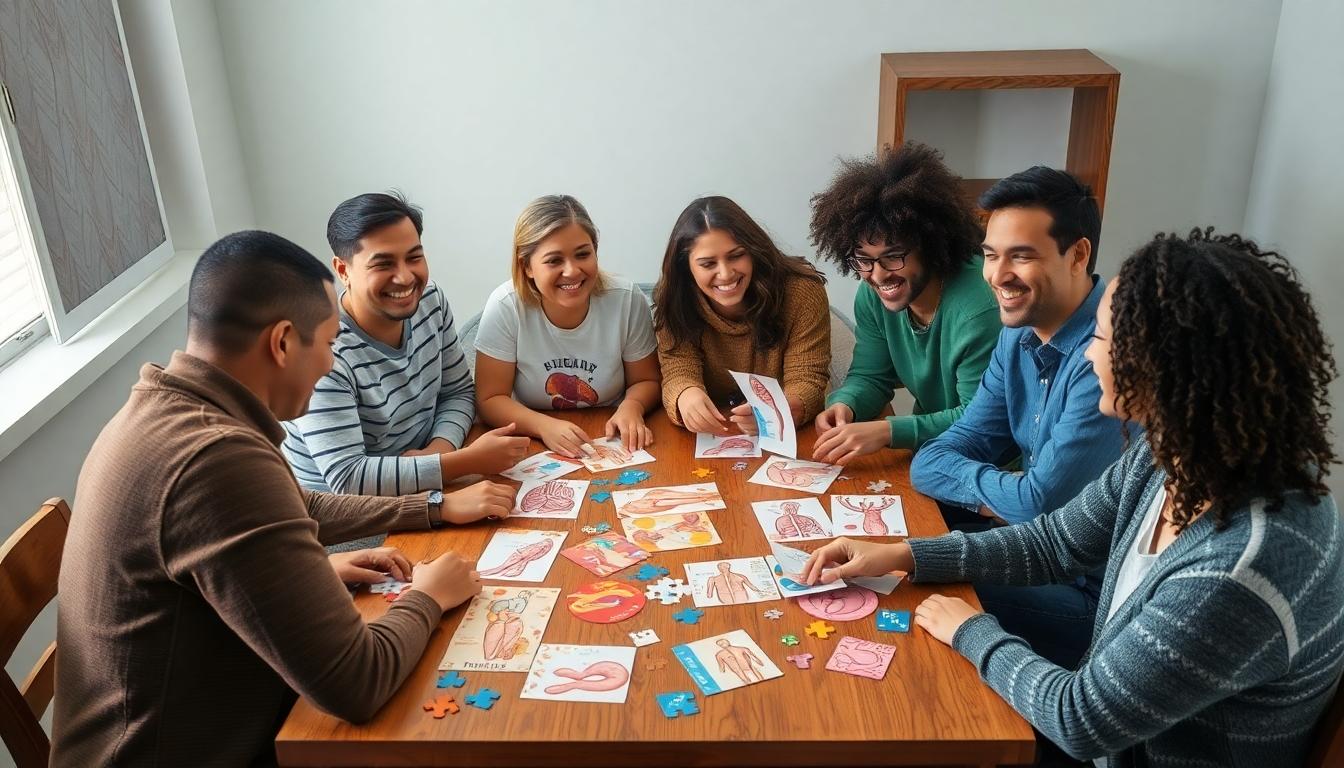
Solving riddles about body parts does more than just entertain—it actually strengthens your brain. These puzzles engage critical thinking and problem-solving skills that enhance analytical and logical reasoning abilities. The cognitive stimulation provided by body parts riddles activates both hemispheres of the brain simultaneously, promoting overall brain health while potentially reducing stress levels.
How Solving Riddles Enhances Cognitive Development
Riddles deliver important benefits for cognitive development through their requirement for active mental processing. This mental engagement supports the formation of new neural connections and strengthens existing ones, providing crucial support for cognitive health across all age groups. When we solve body parts riddles, our brains experience improvements in mental processing speed, concentration abilities, and information retention capacities. The challenge of deciphering these clever wordplays pushes our cognitive abilities to work harder, creating a mental workout that strengthens brain function much like physical exercise strengthens muscles. Regular practice with riddles can establish cognitive reserves that become invaluable throughout our lifespans.
The Connection Between Wordplay and Memory Retention
Wordplay found in body parts riddles significantly improves memory retention through creative language manipulation. These riddles use puns, double meanings, and clever word associations that develop linguistic skills while reinforcing important memory pathways. Research indicates that mentally stimulating activities like solving these anatomical brain teasers actually generate new brain cells and can prevent future neuron loss. The process of analyzing clues, recalling body part names, and making unexpected connections between words creates multiple memory anchors in the brain. Solving these riddles regularly strengthens cognitive flexibility—the ability to switch between different concepts and perspectives—which is essential for maintaining sharp thinking throughout life.
Top 15 Clever Body Parts Riddles for All Ages
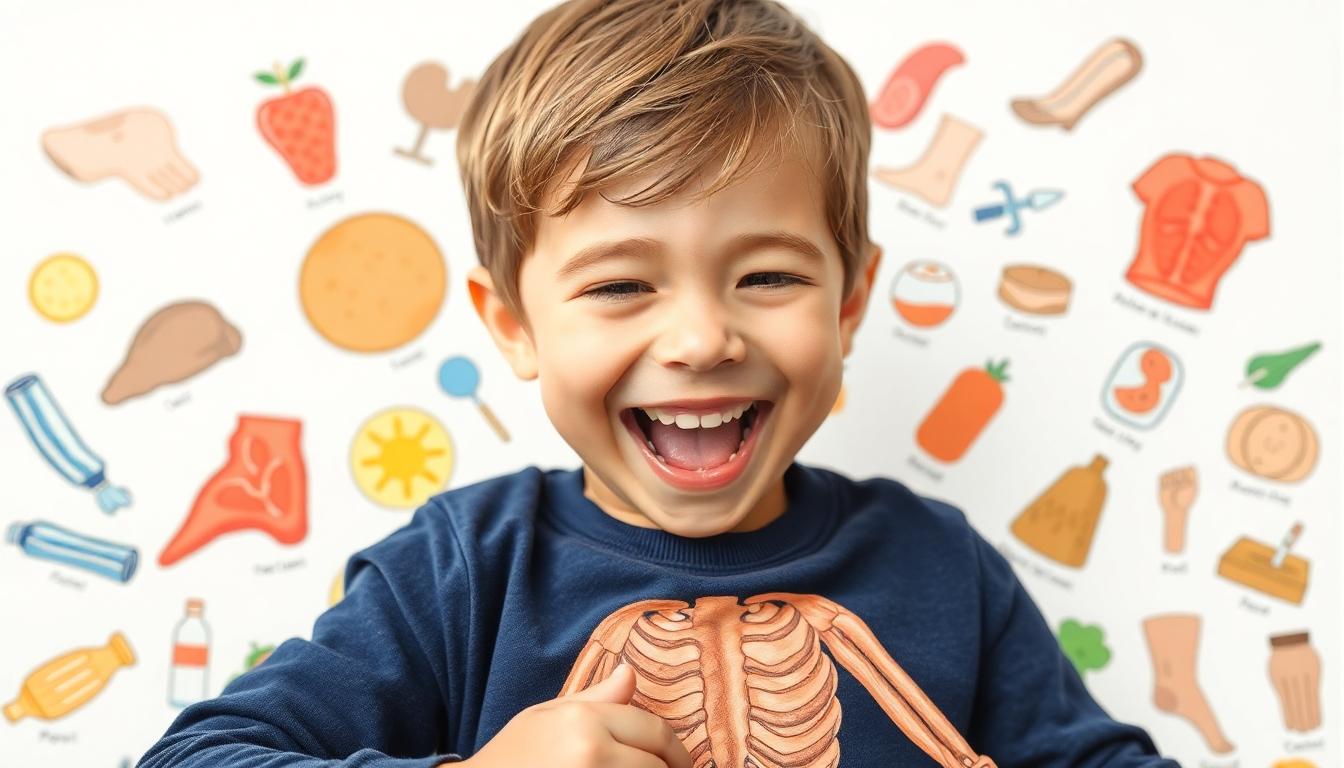
Looking for some brain-teasing fun that everyone can enjoy? These body parts riddles will challenge minds of all ages while teaching anatomy concepts in an entertaining way.
- “I help you see, but I’m not a light. I come in pairs, left and right.”
Answer: Eyes - “I have a bridge, but I’m not a road. I have two holes, but I’m not a shirt.”
Answer: Nose - “I have five little workers, busy all day. They help you grab and hold things your way.”
Answer: Fingers - “I can hear, but I cannot see. I am on the sides of your head.”
Answer: Ears - “I help you chew your favorite treats, with me you bite, without me, defeat.”
Answer: Teeth - “I open and close, and sometimes I smile. I help you talk and eat all the while.”
Answer: Mouth - “I’m in your chest, I pump all day. Without my beat, you’d fade away.”
Answer: Heart - “I move up, I move down, when you’re sad, I make a frown.”
Answer: Eyebrows/Lips - “I bend, but I do not break. I help you move with every step you take.”
Answer: Knee/Elbow - “I’m long and strong, a pillar of might. I keep you standing tall and upright.”
Answer: Spine - “There are eight on a spider and six on a bee, four on an elephant but only two on me.”
Answer: Legs - “You have 2, a needle has one, and a potato has many.”
Answer: Eyes - “I’m something everybody tends to overlook no matter how careful he is.”
Answer: Nose - “What has four legs in the morning, two legs at noon, three legs at night?”
Answer: Human (crawling as baby, walking as adult, using a cane in old age) - “I have three letters; read the same forward and backwards.”
Answer: Eye
Easy Riddles for Young Children
We’ve created simpler riddles that are perfect for introducing younger children to the fun industry of body part puzzles. These easy-to-solve riddles help kids learn about their bodies while developing critical thinking skills.
- “I help you clap and wave hello. What am I?”
Answer: Hands - “I get wet when you drink. What am I?”
Answer: Mouth - “I’m red and pump blood through your body. What am I?”
Answer: Heart - “I help you smell flowers and cookies. What am I?”
Answer: Nose - “I have ten little friends that grow and sometimes need cutting. What am I?”
Answer: Fingernails
Challenging Riddles for Teens and Adults
For those seeking more complex brain teasers, we’ve compiled sophisticated riddles that require deeper thinking and anatomical knowledge. These challenging puzzles will test even the most dedicated riddle enthusiasts.
- “What has fifty legs but can’t walk?”
Answer: Centipede (as a metaphor for body parts) - “You can touch me, but not see me. Throw me out, but not away.”
Answer: Breath - “I’m a single word that becomes shorter when you add two letters to it. What am I?”
Answer: Short - “I’m formed in an instant, can last a lifetime, but am seen only once by those I’m made for. What am I?”
Answer: Fingerprint
7 Classic Body Parts Riddles That Have Stood the Test of Time
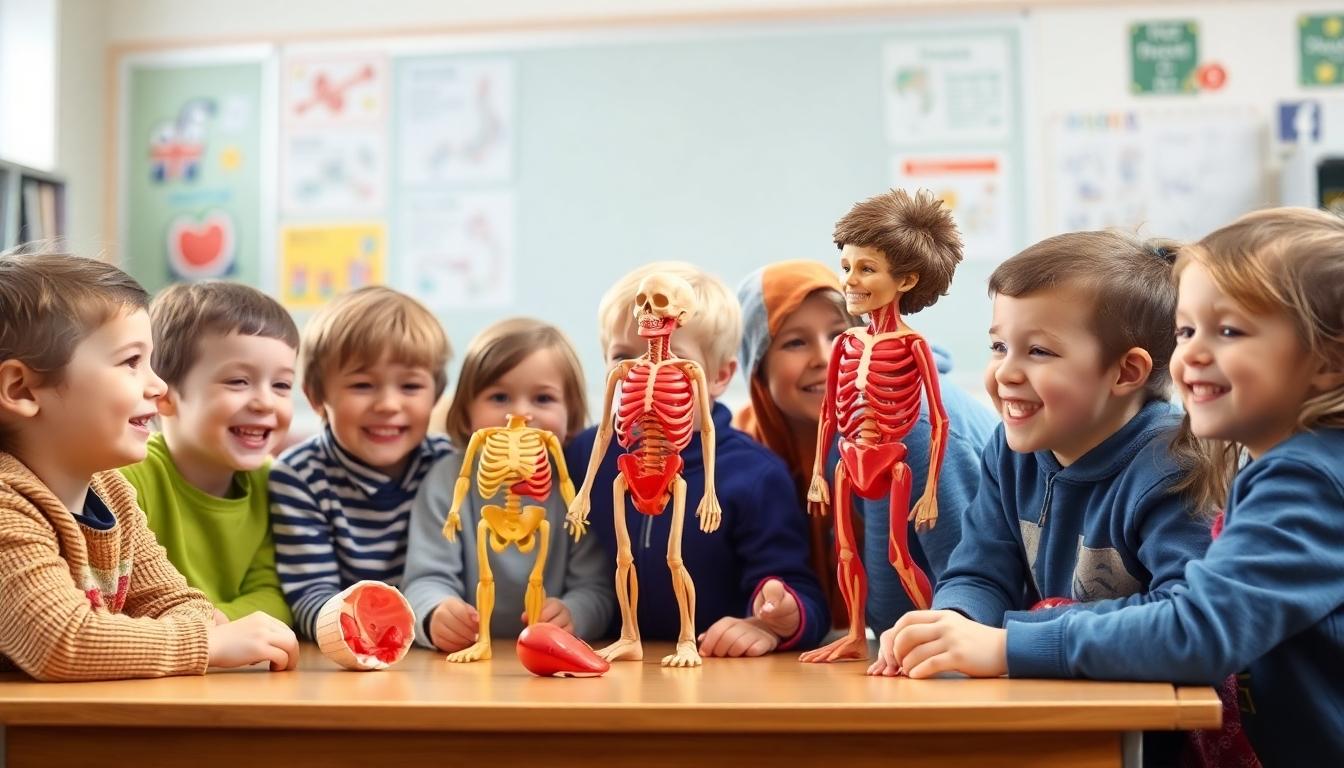
These timeless brain teasers have challenged and entertained people for generations with their clever wordplay about human anatomy. Here are seven classic body parts riddles that continue to perplex and delight:
- “I help you see, but I’m not a light. I come in pairs, left and right.” (Answer: Eyes)
- “I’m long and strong, a pillar of might. I keep you standing tall and upright.” (Answer: Spine)
- “There are eight on a spider and six on a bee, four on an elephant but only two on me.” (Answer: Legs)
- “I have five little workers, busy all day. They help you grab and hold things your way.” (Answer: Hand/fingers)
- “I’m in your chest, I pump all day. Without my beat, you’d fade away.” (Answer: Heart)
- “I can hear, but I cannot see. I am on the sides of your head.” (Answer: Ears)
- “I open and close, and sometimes I smile. I help you talk and eat all the while.” (Answer: Mouth)
Historical Origins of Popular Body Parts Brain Teasers
Body parts riddles emerged primarily from oral traditions serving as educational tools for teaching children about physiology and proper hygiene. Their inherent simplicity made them perfect vehicles for memorization across various cultures worldwide. These riddles typically blend metaphorical descriptions with literal attributes, such as characterizing the spine as a “pillar” while highlighting its actual function. Early versions focused predominantly on functional attributes of body parts, describing how the heart pumps blood or how hands enable grasping objects. This practical approach allowed even young children to connect the riddle with their own anatomy, making abstract concepts tangible through creative language.
How These Riddles Have Evolved Through Generations
Modern versions of body parts riddles have incorporated sophisticated wordplay techniques while maintaining their educational core. Today’s riddles often feature clever linguistic tricks like “You have 2, a needle has one, and a potato has many—eyes,” moving beyond purely descriptive approaches to more abstract thinking challenges. Digital platforms have revolutionized how these riddles spread, with educational games like Baamboozle and social media sites like Pinterest giving these ancient brainteasers new life and wider reach. While preserving their fundamental structures, contemporary adaptations emphasize interactivity through classroom quizzes and viral challenges that appeal to digital natives. This evolution ensures these classic riddles remain relevant in today’s fast-paced industry while still fulfilling their original purpose of making learning about human anatomy captivating and memorable.
Using Body Parts Riddles in Educational Settings

Body parts riddles serve as powerful educational tools that make learning human anatomy captivating and memorable for students of all ages. These clever puzzles do more than entertain—they build critical cognitive skills while reinforcing important anatomical concepts.
Incorporating Riddles into Anatomy Lessons
Teachers can transform traditional anatomy lessons by integrating body parts riddles into their curriculum. These riddles enhance cognitive skills, boost creativity, and deepen students’ understanding of human anatomy through interactive problem-solving. Many educators pair riddles with matching games to reinforce body part identification, creating a multi-sensory learning experience that’s particularly effective in special education settings. This combination of tactile and cognitive engagement helps students retain anatomical knowledge more effectively.
Successful integration often begins with using riddles as attention-grabbing lesson starters that spark curiosity about the day’s topic. Students become more invested in learning when teachers link these riddles to interactive exercises like research projects or collaborative activities. For instance, asking students to research exact organs or systems and then create their own riddles based on their findings fosters deeper engagement with anatomical concepts. The process naturally promotes language development as students analyze clues and articulate their understanding of body functions and structures.
How Teachers Can Create Custom Body Parts Riddles
Creating effective body parts riddles requires thoughtful planning and structure. We recommend following these steps for developing educational riddles:
- Topic Selection – Use a “Wonder” worksheet approach that allows students to select exact body parts, health habits, or medical conditions they’re curious about. This student-directed selection increases motivation and personal investment in the learning process.
- Research Foundation – Guide students to gather essential facts about their chosen topics, including functions, appearances, and anatomical locations. This research phase builds background knowledge that forms the basis for creative riddle creation.
- Structure Development – Teach students to frame clues around exact attributes such as appearance (“I’m red and pump life”), function (“I help you breathe”), or location (“You find me in your chest”). This structured approach helps create clear, educational riddles that reinforce key concepts.
- Collaborative Refinement – Encourage peer review sessions where students share draft riddles and offer feedback to improve clarity and educational value. This collaborative step strengthens both the riddles and students’ understanding of the material.
Custom riddles created through this process align perfectly with evidence-based learning strategies that emphasize hands-on, inquiry-driven education. Students develop deeper connections to anatomical concepts when they actively participate in creating learning materials rather than passively consuming information.
12 Hilarious Body Parts Riddles That Will Make You Laugh

Ready for some anatomical humor? We’ve compiled twelve side-splitting body parts riddles that perfectly balance education with entertainment.
Family-Friendly Funny Riddles
- The Entryway: I’m a body part that is likewise an entryway. I open and close throughout the day. What am I? (Answer: Mouth)
- The Seeing Paradox: You have two of me, while a needle has only one. What am I? (Answer: Eyes)
- The Sensory Mystery: I can hear everything around me, but I cannot see a thing. What body part am I? (Answer: Ears)
- The Helpful Team: Five little workers help you grab, write, and touch. They’re quite handy when you need them. What are we? (Answer: Fingers)
- The Emotional Indicators: We move up and down and can make a frown. We sit above windows to the soul. What are we? (Answer: Eyebrows)
- The Architectural Wonder: I have a bridge and two holes that help you breathe. What am I? (Answer: Nose)
Slightly More Sophisticated Humor Riddles
- The Life Stages Puzzle: What walks on four legs in the morning, two legs in the afternoon, and three legs in the evening? (Answer: Humans – crawling as babies, walking as adults, using canes when elderly)
- The Mobility Joke: What has fifty legs but can’t walk at all? (Answer: A centipede with a mobility issue)
- The Palindrome Part: I read the same forward and backward, and you use me to read these words. What am I? (Answer: Eye)
- The Dark Humor: What’s better than presence of mind during an accident? (Answer: Absence of body)
- The Footless Walker: What has a foot but no legs to stand on? (Answer: A snail)
Body Parts Riddles in Different Languages and Cultures

Body parts riddles exist in virtually every culture and language, each with unique characteristics that reflect linguistic patterns and cultural values. The way these riddles incorporate anatomical terms offers fascinating insights into how different societies view and describe the human body.
How Translation Affects the Cleverness of Riddles
Translation often diminishes the cleverness of body parts riddles due to the loss of linguistic nuances. Spanish riddles demonstrate this challenge perfectly—the riddle about garlic (el ajo) uses “dientes” (teeth) to describe cloves, creating a brilliant metaphorical connection in Spanish. Unfortunately, this wordplay loses its impact when translated to English, as we don’t typically refer to garlic segments as “teeth.” Direct translations frequently fail to capture the original metaphors that make these riddles captivating and thought-provoking. The effectiveness of body parts riddles depends heavily on language-exact associations, making them particularly vulnerable to translation issues. Cultural references embedded within these riddles further complicate accurate translation, requiring not just linguistic knowledge but cultural context to appreciate their full meaning.
Universal Body Parts Riddles Found Across Cultures
Even though linguistic differences, certain body-related riddles appear remarkably similar across diverse cultures. The famous riddle about human development—progressing from four legs (crawling as a baby) to two legs (walking as an adult) to three legs (using a cane in old age)—exists in both Kazakh traditions and ancient Greek mythology with the Sphinx’s riddle. This universality suggests humans share fundamental observations about our physical development regardless of cultural background. Competitive riddle traditions flourish among various groups, including Kazakhs and Bedouins, where body-based analogies test participants’ wit and problem-solving abilities. Spanish riddles frequently incorporate food analogies with body parts, while Kazakh riddles integrate pastoral elements like references to livestock and herbs. The exact environmental contexts shape how cultures construct these enigmas, yet they all demonstrate shared cognitive patterns in how humans conceptualize and describe body parts metaphorically. These cross-cultural similarities reveal our common fascination with using the human form as a foundation for creative wordplay and mental challenges.
How to Create Your Own Body Parts Riddles
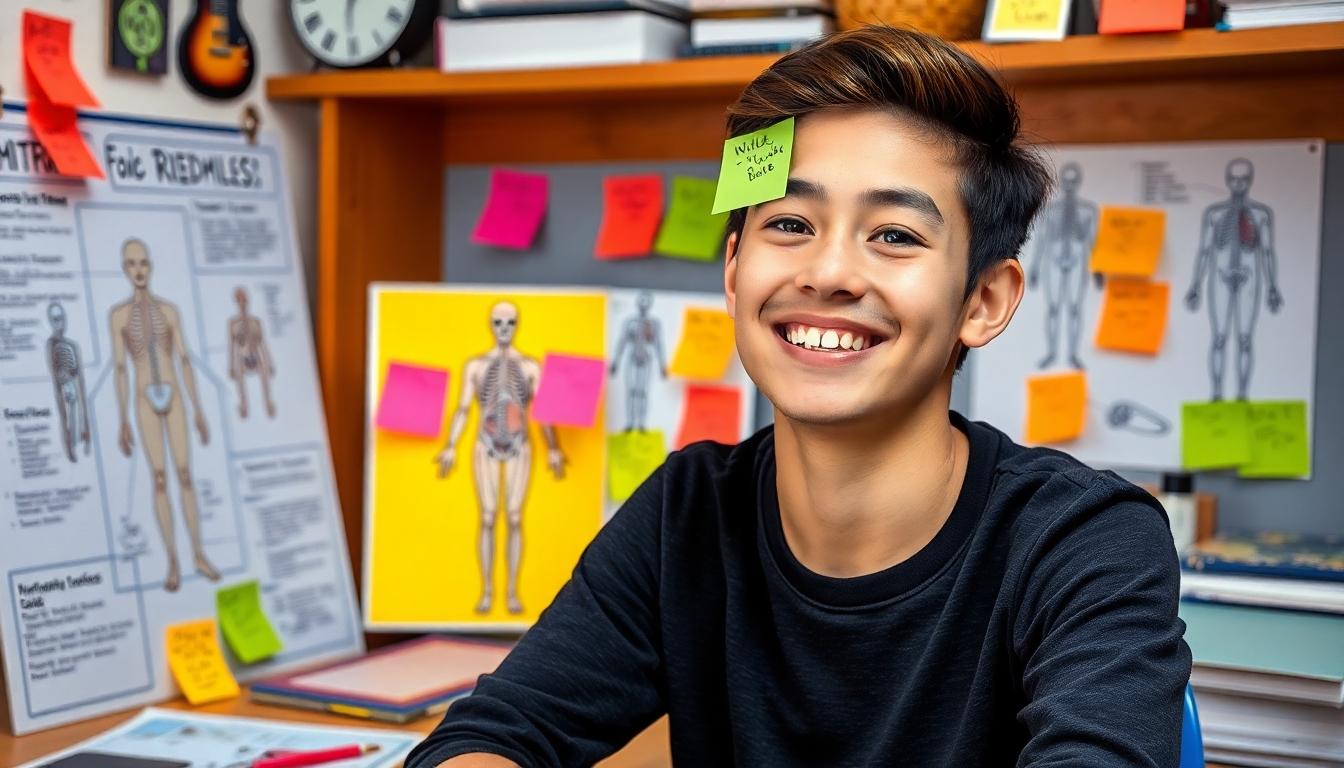
Creating your own body parts riddles is a fun way to engage others while testing their knowledge of human anatomy. We’ve compiled essential steps and techniques to help you create clever and challenging riddles.
Formula for Crafting Memorable Riddles
Memorable body parts riddles follow a simple yet effective three-part formula. Start with an introduction that presents your subject in a way that’s both clear and obscure enough to maintain mystery. Next, develop a description using creative metaphors or clever wordplay that hints at the answer without giving it away completely. Finally, include a punchline that provides a clear clue or directly reveals the answer. This structure ensures your riddle remains challenging while still being solvable. For example, when crafting an eye riddle, you might introduce it as something that helps you see, describe it using metaphors like “windows,” and conclude with a hint about coming in pairs.
Common Wordplay Techniques Used in Body Parts Riddles
Effective body parts riddles employ several wordplay techniques to create captivating puzzles. Metaphors compare body parts to unrelated objects, such as referring to eyes as “windows” or teeth as “pearls.” Double meanings use words with multiple interpretations, like using “bridge” for the nose or “nail” for fingernails. Reversal techniques subvert expectations by describing a body part through contradictory actions, such as “I open and close, yet never falter” for the mouth. Analogies connect body parts to non-human entities or systems, like comparing fingers to “five little workers.” These techniques create layers of meaning that make your riddles both challenging and satisfying to solve. Try incorporating these approaches in riddles like “I have a bridge, but I’m not a road. I have two holes, but I’m not a shirt” for the nose, or “I help you see, but I’m not a light. I come in pairs, left and right” for eyes.
The Most Challenging Body Parts Riddles Ever Created

Ready to put your anatomy knowledge to the ultimate test? We’ve compiled some of the most brain-teasing body parts riddles that will challenge even the most clever minds. These riddles require you to think outside the box and tap into your understanding of human anatomy in creative ways.
- I open and close, yet never falter. What am I?
This tricky riddle refers to body parts that perform consistent, rhythmic actions throughout our lives. The answer could be either your mouth or eyelids, both of which open and close countless times daily without wearing out.
- I carry your weight, I take you places, I leave my marks in many spaces. What am I?
Your feet bear the burden of your entire body weight while enabling mobility and leaving literal footprints behind. This riddle cleverly captures the essential function of feet in our daily movement.
- I go up, I go down, but I never leave the ground. What am I?
The knee presents an interesting paradox in this riddle. While knees bend up and down constantly during walking and other movements, they remain attached to the leg and never actually leave the ground independently.
- I help you breathe, I help you sing, without me, life wouldn’t mean a thing. What am I?
This challenging riddle could refer to either the lungs or vocal cords. Both are essential for breathing and producing sound, making them literally life-sustaining body parts.
- I’m found inside, long and curled, I help digest food from around the industry. What am I?
The intestines form a complex, coiled system within our bodies that processes nutrients from everything we consume. Their remarkable length and winding configuration make them perfect subjects for this anatomical brain teaser.
- I work at night, I keep things tight, when you wake, I make things right. What am I?
Eyelids perform crucial protection and restoration functions while we sleep. They shield our eyes from external elements and distribute moisture to rejuvenate eye tissues overnight.
- I separate each finger with ease, I bend and move, just like your knees. What am I?
Joints enable the flexibility and articulation of our fingers, allowing for the precise movements needed for countless daily tasks. This riddle highlights the similarity between different types of joints in our body.
- I am a muscle, but I don’t help you lift. What am I?
This refers to muscles that control balance, such as those found in the inner ear. Unlike skeletal muscles used for strength and movement, these specialized muscles serve a different but equally important function.
- The only amusing part of the body. What am I?
The funny bone isn’t actually a bone at all but the ulnar nerve. This clever wordplay takes advantage of the common term for that sensitive spot on your elbow that creates a tingling sensation when bumped.
- I’m something you always wear, but never see. What am I?
Skin, our largest organ, covers our entire body yet remains largely out of our own view. This paradoxical riddle highlights how we can simultaneously possess something completely yet rarely observe it directly.
These challenging riddles demonstrate the fascinating complexity of the human body while providing a mental workout. Each one requires lateral thinking and a dash of anatomical knowledge to solve successfully.
How Body Parts Riddles Help Children Learn Anatomy
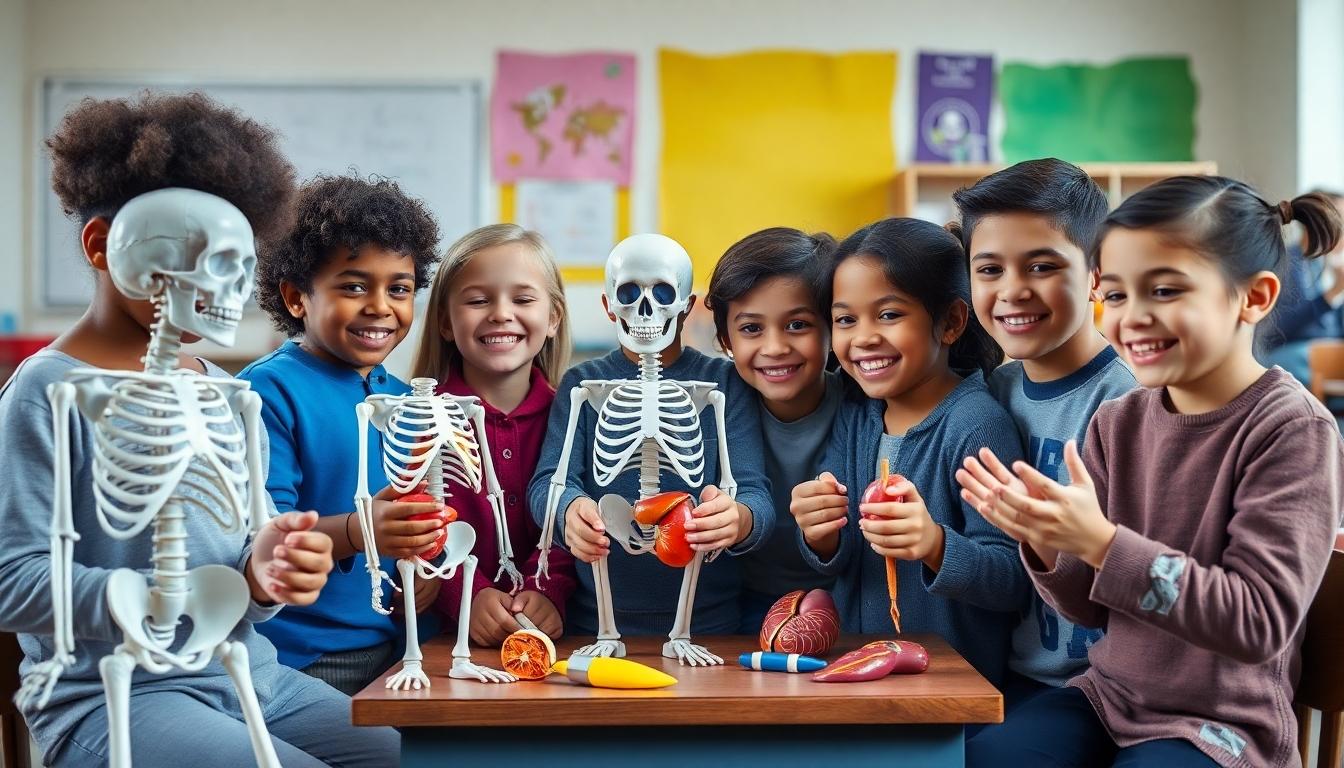
Body parts riddles serve as powerful educational tools that transform anatomy lessons from mundane memorization into exciting discovery sessions. Children naturally engage with these playful puzzles, which create meaningful connections to anatomical concepts that might otherwise seem abstract or complicated.
Building Vocabulary Through Play
Body parts riddles introduce anatomical terminology in a context that’s both memorable and fun. Kids enthusiastically learn words like “vertebrae” or “nostrils” when presented as part of an intriguing puzzle rather than a dry vocabulary list. These riddles help children associate scientific terms with their functional understanding of body parts.
Improving Critical Thinking Skills
These anatomical brain teasers require children to analyze clues, make connections, and think laterally. When solving a riddle about fingers or toes, children must process information about function, appearance, and location simultaneously. This multi-dimensional thinking strengthens neural pathways and improves problem-solving abilities, as riddles “involve wordplay and require deductive reasoning to solve.”
Creating Visual-Verbal Connections
Riddles encourage children to visualize body parts while processing verbal descriptions. This dual-coding approach helps cement anatomical knowledge more firmly in memory. For example, a riddle describing eyes as “two round windows that let in light” creates both a mental image and functional understanding.
Promoting Active Learning
Unlike passive learning methods, riddles demand participation and engagement. Children become active participants in their anatomical education when attempting to solve puzzles like “I have a face and hands but no arms or legs. What am I?” This active involvement significantly improves retention of anatomical concepts.
Fostering Anatomical Awareness
Regular exposure to body parts riddles helps children develop greater awareness of their own anatomy. They begin to understand how different body parts function together as an integrated system. This awareness forms a foundation for future health education and encourages children to ask more sophisticated questions about how their bodies work.
Making Learning Memorable
The emotional component of solving riddles—that “aha!” moment—creates stronger memory imprints than conventional teaching methods. Children remember anatomical facts longer when they’ve discovered them through the satisfaction of solving a challenging riddle. These experiences “help a sense of accomplishment when a riddle is solved,” reinforcing the learning process.
Supporting Inclusive Learning Styles
Body parts riddles accommodate different learning preferences. Visual learners benefit from the imagery, auditory learners enjoy the wordplay, and kinesthetic learners can act out the clues. This multi-sensory approach ensures that anatomical concepts are accessible to children regardless of their primary learning style.
Why Body Parts Riddles Remain Popular in the Digital Age
Body parts riddles have stood the test of time because they connect us to our most familiar territory – ourselves. They’ve successfully transitioned into the digital age while maintaining their educational value and entertainment appeal.
We’ve seen how these clever puzzles strengthen cognitive function create learning opportunities and bridge cultural divides. Whether you’re crafting your own riddles or challenging friends with classics they offer a unique blend of anatomy education and wordplay.
Ready to put your knowledge to the test? Try sharing some of these riddles at your next gathering or classroom session. You’ll likely find they spark curiosity conversations and laughter while exercising those brain muscles in ways few other activities can match.
Frequently Asked Questions
What are body parts riddles?
Body parts riddles are brain teasers that use wordplay, puns, and creative descriptions to challenge problem-solving abilities while focusing on human anatomy. They serve as both entertainment and educational tools that strengthen cognitive function while teaching about different parts of the human body in a fun, engaging way.
What cognitive benefits do body parts riddles provide?
Solving body parts riddles strengthens brain function, enhances critical thinking, and promotes overall brain health. They help form new neural connections, improve mental processing speed, boost concentration, and enhance information retention. Regular riddle practice builds cognitive reserves beneficial for people of all ages.
How can teachers use body parts riddles in education?
Teachers can integrate riddles into anatomy lessons to make learning more captivating and memorable. They help transform traditional lessons into interactive problem-solving activities that build cognitive skills while deepening understanding of human anatomy. This hands-on approach aligns with evidence-based learning strategies and increases student engagement.
How do I create my own body parts riddle?
Create your own riddle by following a three-part formula: start with a clear yet mysterious introduction, develop creative descriptions using metaphors and wordplay, and craft a punchline that hints at the answer. Focus on unique characteristics of the body part and incorporate wordplay techniques like double meanings, reversals, and analogies.
Are body parts riddles suitable for children?
Yes! Body parts riddles are excellent educational tools for children, transforming anatomy lessons into exciting discovery sessions. They build vocabulary, improve critical thinking, create visual-verbal connections, promote active learning, and foster anatomical awareness while making the learning process memorable and accessible for different learning styles.
Do body parts riddles vary across different cultures?
Yes, body parts riddles exist across many cultures, reflecting unique linguistic patterns and cultural values. While some riddles show remarkable similarities across cultures (suggesting shared human fascination with the body), others are culture-specific. Translation challenges often arise due to linguistic nuances and cultural references that don’t transfer easily between languages.
How difficult can body parts riddles get?
Body parts riddles range from simple ones suitable for young children to extremely challenging versions that test even the cleverest minds. The most difficult riddles require creative thinking, solid anatomical knowledge, and lateral problem-solving skills. These complex riddles often use sophisticated wordplay and ambiguous descriptions to disguise common body parts.
What makes a good body parts riddle?
A good body parts riddle balances cleverness with solvability. It uses creative descriptions, metaphors, or puns that hint at the answer without making it too obvious. The best riddles are memorable, educational, and provide that satisfying “aha” moment when solved. They should be clear enough to have one definitive answer but challenging enough to require thought.







